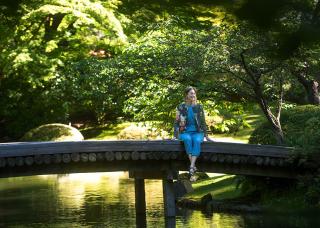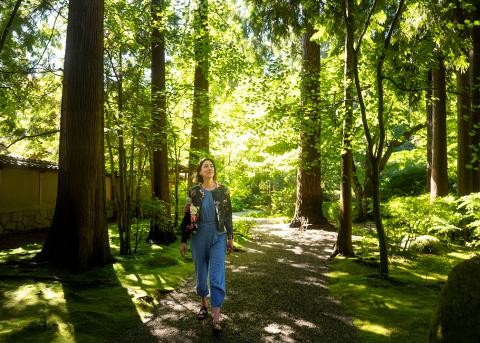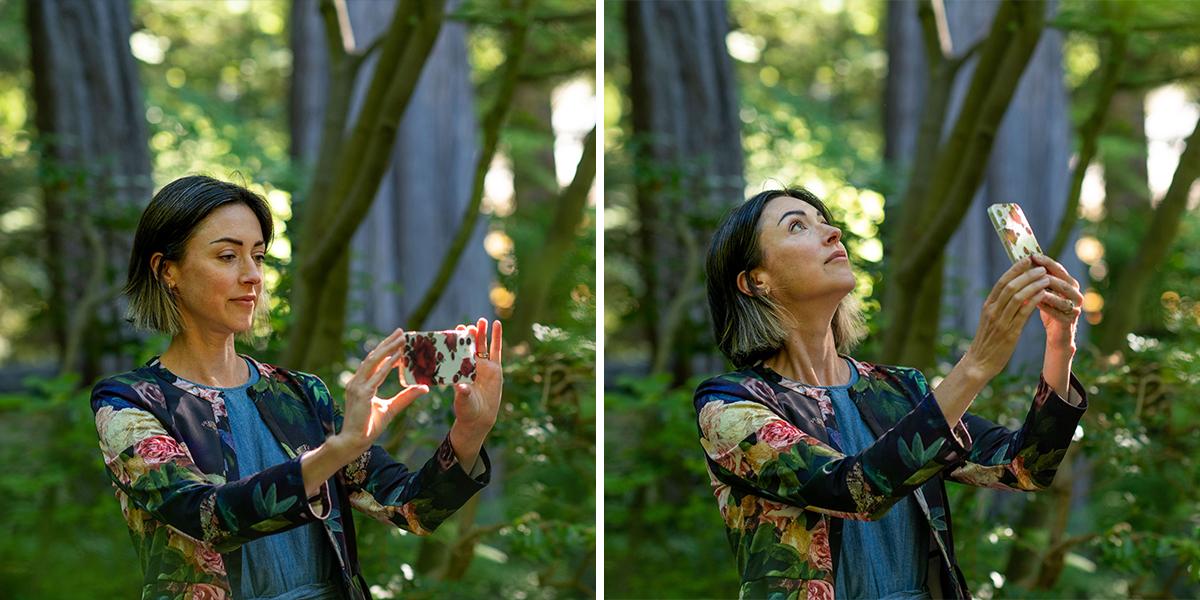A ‘quiet rumbling’ that led to a visible focus on student humanity
How Katie Lee Bunting’s shift towards values-based teaching transcends the confines of traditional thinking

How Katie Lee Bunting’s shift towards values-based teaching transcends the confines of traditional thinking

In spring of 2022, we asked our teaching faculty to tell us who among them were offering innovative learning experiences, environments, and/or introducing new ways of overcoming barriers in their classes. This is part four in a six-part series recognizing teaching faculty at UBC.
The last couple of years have been challenging for many faculty and staff, not least Katie Lee Bunting, Assistant Professor of Teaching in the Department of Occupational Science and Occupational Therapy, within UBC’s Faculty of Medicine.
Having joined UBC in 2014, after working as an occupational therapist for many years, Katie now teaches in the Master of Occupational Therapy program. The COVID-19 pandemic meant she had to navigate the challenges alongside her students; but it also brought about a shift that enabled her to develop her teaching in a way she hadn’t expected.
“When I first made the transition to teaching, I wanted to make sure I was meeting expectations,” she explains. “I followed a more structured approach, with lectures designed around learning objectives, often taking place in our labs. In my first year or two of teaching, I was concerned with making sure I came across as knowledgeable, but it was stressful and I don’t think it was necessarily the best learning experience for students.

“I always felt a need to align my teaching with my values: connection, love, community, humanity, justice, equity, mattering. This was really amplified during the COVID-19 pandemic. I felt it was important for me to bring that courage to my work, because, I would suggest that these values aren’t always centred within higher education.”
Katie’s teaching style is now much more explicitly linked to her values, and adopts innovative approaches including teaching in nature, ungrading and a collaboration with the Morris and Helen Belkin Art Gallery. All are focused on breaking down traditional structures and allowing students to learn about themselves as well as their program.
The results can be seen in the educational outcomes as well as in small scale research, such as a Teaching and Learning Enhancement Fund project which Katie took part in, in collaboration with UBC Wellbeing. She adds: “Qualitative interviews showed that students found that being in a forest environment while learning, for example, pushed their thinking. The openness of space, rather than a closed classroom, meant they felt less confined and able to think more abstractly.”
The breaking down of traditional physical learning environments also led Katie to develop a collaboration with the Morris and Helen Belkin Art Gallery. As part of this initiative, students spend time in the Belkin, and with the Artist in Residence, to study art and drawing. Katie explains: “By developing an awareness of what the students notice, they are able to see what and how they pay attention, and more importantly why. This can then be transferred to their interactions with clients, which is especially important within a health profession.”
The success of the collaboration with the Belkin led to another partnership in Prince George, where a new cohort of students will start their learning this fall. Katie continues: “My colleague Dr. Elly Park, is working with our Prince George cohort and we’ve been in touch with the Two Rivers Gallery. We are excited to see this new collaboration developing, as an example of place-based learning across our two program sites.”
“By developing an awareness of what the students notice, they are able to see what and how they pay attention, and more importantly why. This can then be transferred to their interactions with clients, which is especially important within a health profession.”
Katie Lee Bunting, Assistant Professor of Teaching in the Department of Occupational Science and Occupational Therapy, Faculty of Medicine.

Although Katie had adopted some value-driven approaches to her teaching prior to the pandemic, she says is now far more deliberate and unabashed. She describes the ‘quiet rumbling’ that has grown louder in recent years; which she is now allowing to be clearly heard in her classes.
“Our students are all so bright and already know how to learn,” she adds. “But as occupational therapists we bring our whole self to the role, which means both personal and professional growth matter.”
After reading Ungrading by Susan D. Blum, Katie explored ways in which her students could be assessed (or assess themselves) without necessarily following the traditional method of fixed exams. This included offering an ‘open exam’ which could be taken within a one-day period, as well as giving students the choice between taking an exam or completing a critical, creative project. She has also received a UBC Scholarship of Teaching and Learning (SoTL) Seed Program award to explore student perspectives on how this assessment experience has shaped their learning and engagement.
“Around 70 per cent chose the critical, creative project, in which they had to create an artifact which represented the learning that they were still wrestling with,” she continues. “For example, one student used Kintsugi (the Japanese art of putting broken pottery pieces back together with gold) to represent how, during the course, her world view had been fractured and was rebuilt and evolving into something so much more.”
The grade averages were the same for both the online exam and the artifact project – but the biggest surprise came for Katie herself. She explains: “Marking those assignments was such a joy. And to see students demonstrate awareness of their learning was so powerful, and vital as they embark on their field work.
“Personally, I had to also notice my own response whenever I introduced these new approaches. So much of this is related to power, and I believe it’s my responsibility to constantly challenge myself to share power more. If more of us shared power, I believe it would transform the whole university.”
Written by Kate Hunter, UBC Internal Communications
October 2022
"I believe it’s my responsibility to constantly challenge myself to share power more. If more of us shared power, I believe it would transform the whole university.”
Katie Lee Bunting, Assistant Professor of Teaching in the Department of Occupational Science and Occupational Therapy, Faculty of Medicine.
Accounting. Marketing. Leadership. Lego? How UBC Sauder’s Dr. Kari Marken challenges her Creativity students with purposeful play (Sept. 20)
Science at the crossroads of creativity and ethics: Dr. Robin Young looks at cell biology through a lens of ethics, diversity and inclusion (Sept. 26)
Necessity is the mother of a delicious invention: Gerry Kasten and Joel Barohn are breaking down barriers and redefining how students learn to cook at UBC (Oct. 3)
Making the case for open-access law texts: Dr. Samuel Beswick has created Canada’s first online open-access tort law casebook (Oct. 17)
Co-creating a future beyond the classroom: How Dr. Su-Jan Yeo emboldens students to turn urban planning ideas into real-world outcomes (Oct. 24)
Find the latest news, updates, events, and useful dates from across UBC, curated for faculty and staff by Internal Communications.
Access a library of resources from multiple UBC websites, all in one place.